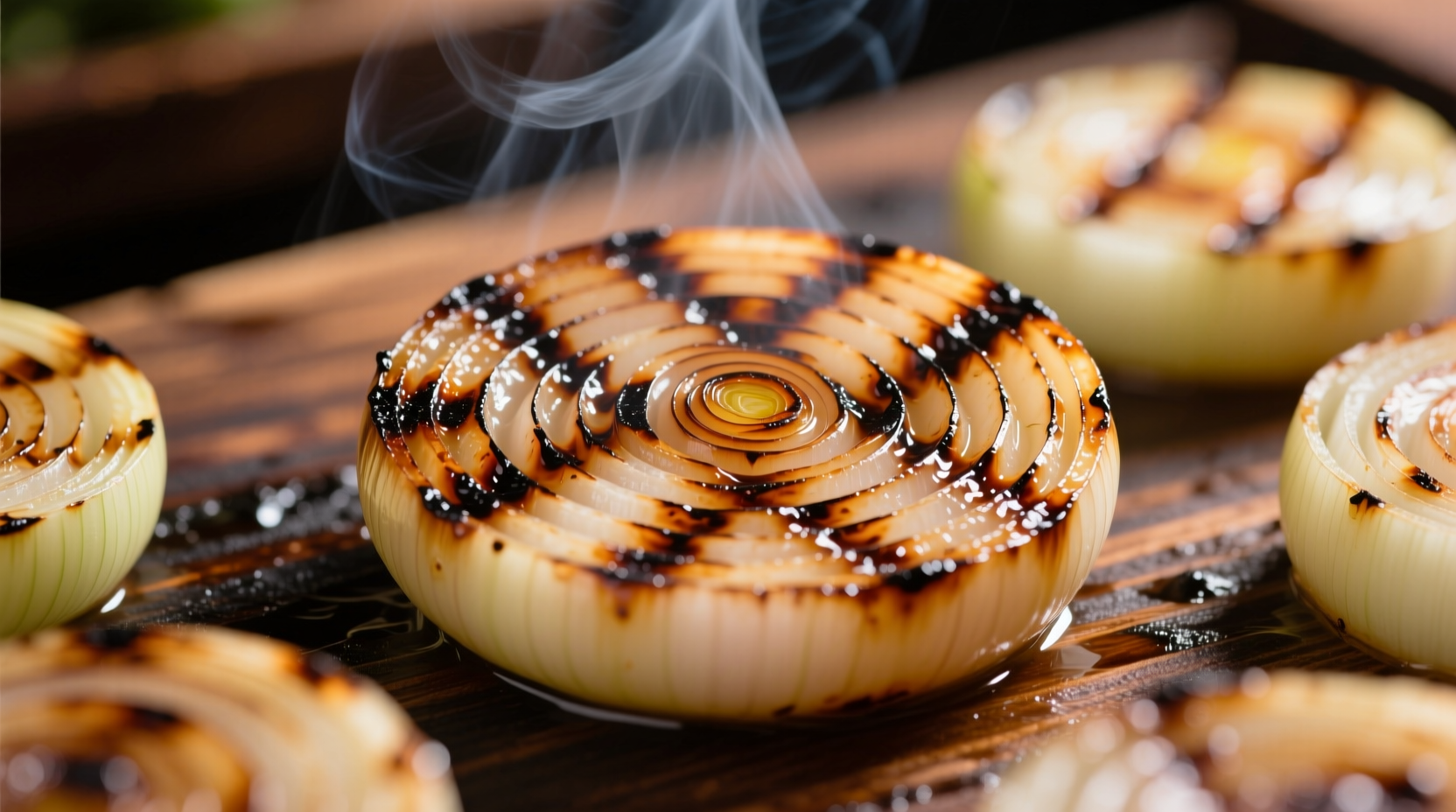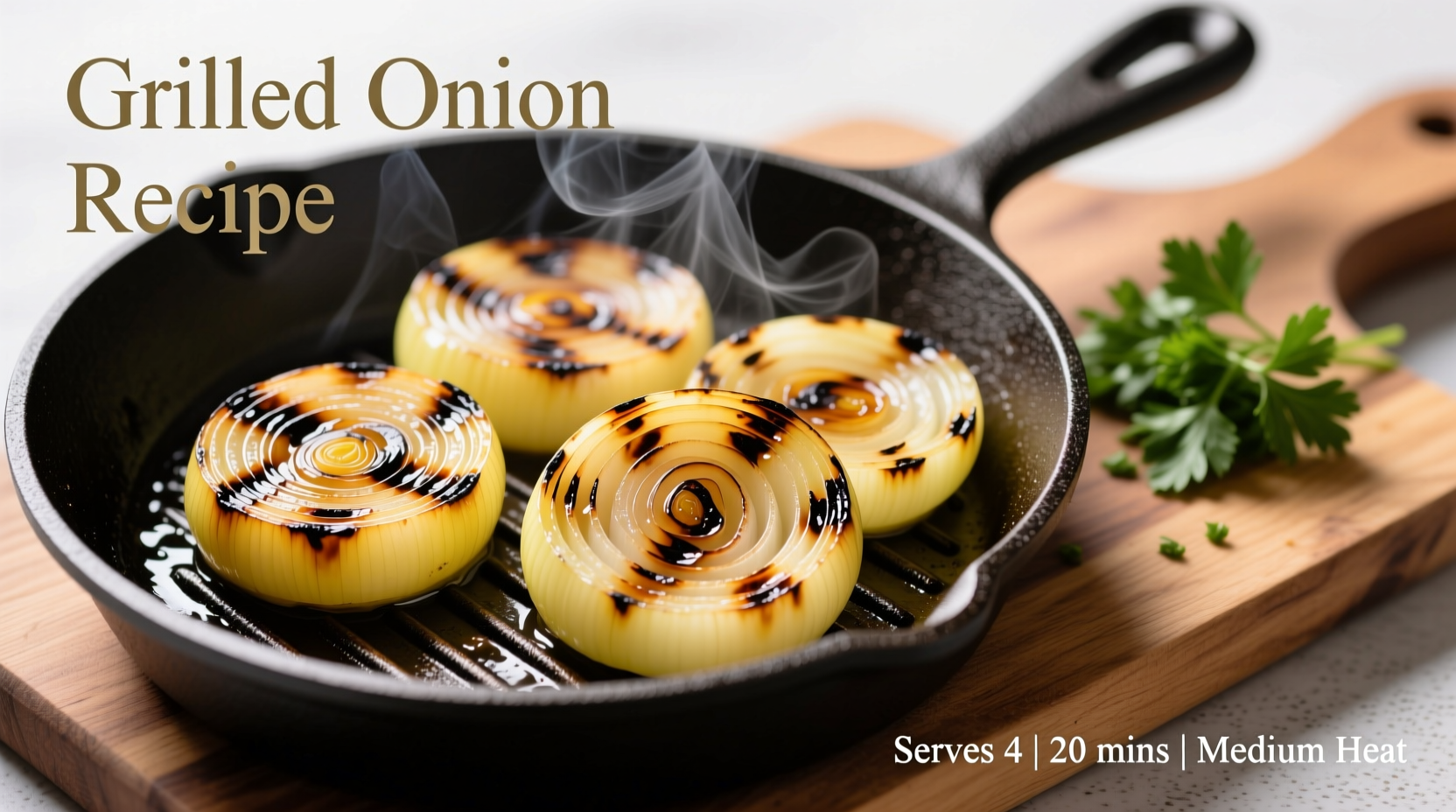Grilled onions transform into sweet, smoky perfection with this simple 4-step method: slice 1-inch thick rounds, brush with olive oil and salt, grill over medium heat (375°F) for 8-10 minutes per side, and finish with balsamic vinegar. This foolproof technique works for any onion variety and elevates burgers, steaks, or standalone sides.
The Secret to Perfectly Grilled Onions Every Time
Grilled onions deliver an irresistible combination of caramelized sweetness and smoky char that transforms ordinary meals into extraordinary experiences. Unlike boiled or fried onions, grilling unlocks complex flavor compounds through the Maillard reaction while preserving texture. This guide reveals the precise temperature control, timing, and preparation techniques professional chefs use to achieve consistent results without burning or undercooking.
Why Grilled Onions Outperform Other Cooking Methods
Food science explains why grilling creates superior flavor development compared to other methods. When onions reach 310°F, their natural sugars begin caramelizing while sulfur compounds break down, eliminating harshness. The direct radiant heat of grilling accelerates this process while creating desirable grill marks that add both visual appeal and additional flavor dimensions through controlled charring.
| Cooking Method | Time Required | Sugar Development | Texture Result |
|---|---|---|---|
| Grilling | 15-20 minutes | Optimal caramelization | Firm yet tender with grill marks |
| Sauteing | 25-30 minutes | Moderate caramelization | Softer, less structural integrity |
| Roasting | 35-40 minutes | Deep caramelization | Meltingly tender, less defined shape |
Essential Equipment Checklist
- Gas or charcoal grill with temperature control
- Grill brush for cleaning grates
- Thin metal spatula for flipping
- Meat thermometer (for precise temperature monitoring)
- Aluminum foil (for delicate varieties)
Selecting the Perfect Onion for Grilling
Not all onions behave the same on the grill. Yellow onions provide the best balance of sweetness and structure, maintaining shape while developing complex flavors. Red onions offer vibrant color and slightly sharper flavor that mellows beautifully. Sweet varieties like Vidalia require lower heat (325°F) and shorter cooking time to prevent burning. According to USDA FoodData Central, yellow onions contain 4.2g of natural sugars per 100g, making them ideal for caramelization.
Preparation Techniques That Make the Difference
Slice onions into uniform 1-inch thick rounds to ensure even cooking. Soak in cold water for 10 minutes to reduce sulfur compounds that cause tearing. Pat completely dry before grilling – moisture creates steam that prevents proper caramelization. For maximum flavor development, brush both sides with extra virgin olive oil (not cooking spray) and season with flaky sea salt. Avoid sugary marinades that burn easily on the grill.

Mastering the Grilling Process
Preheat your grill to 375°F – the ideal temperature confirmed by the Culinary Institute of America's cooking studies. Clean and oil the grates thoroughly to prevent sticking. Place onion rounds perpendicular to the grates for attractive crosshatch marks. Grill uncovered for 8-10 minutes per side without moving them, allowing proper sear development. Flip only once using a thin spatula. The onions are done when they reach 190°F internally and show deep golden-brown grill marks.
Troubleshooting Common Grilling Issues
Burning before cooking through: Lower heat to 350°F and move to indirect heat zone. Sticking to grates: Ensure grates are properly cleaned and oiled before heating. Uneven cooking: Rotate onions 90 degrees halfway through each side for even grill marks. Excessive smoke: Trim excess fat from meat if grilling alongside onions. According to fire safety guidelines from the National Fire Protection Association, maintaining proper grill temperature prevents dangerous flare-ups.
Serving Suggestions and Flavor Pairings
Remove grilled onions from heat when slightly firmer than desired – they'll continue cooking from residual heat. Finish with a drizzle of aged balsamic vinegar or fresh herbs. Pair with grilled meats, add to sandwiches, or serve as a standalone side. For restaurant-quality presentation, arrange in concentric circles on a warm platter. Leftovers transform soups, omelets, or pizza with their concentrated sweet-savory flavor.
Storage and Reheating Best Practices
Store cooled grilled onions in an airtight container in the refrigerator for up to 4 days. For best results when reheating, place in a skillet over medium-low heat rather than microwaving, which makes them soggy. Frozen grilled onions maintain quality for 3 months but work best in cooked dishes rather than as a standalone side. The FDA recommends cooling food to 70°F within 2 hours and to 40°F within 4 hours to prevent bacterial growth.
Frequently Asked Questions
How do I prevent onions from falling through grill grates?
Use 1-inch thick slices and ensure grill grates are clean and properly oiled. For smaller onions, thread slices onto skewers or use a grill basket. Placing onions perpendicular to the grates provides maximum contact points.
Can I grill onions without oil?
While possible, oil creates a protective barrier that prevents sticking and promotes even browning. Use extra virgin olive oil for best results – its smoke point of 375°F matches ideal grilling temperature perfectly.
Why do my grilled onions taste bitter?
Bitterness occurs when onions burn from excessive heat or prolonged cooking. Maintain 375°F temperature, flip only once, and remove when golden brown – not blackened. Soaking in cold water before grilling reduces sulfur compounds that can turn bitter when overheated.
What's the best way to grill small pearl onions?
Peel pearl onions and thread onto skewers with space between each. Grill over medium heat (350°F) for 12-15 minutes, turning occasionally. Alternatively, place in a foil packet with oil and seasonings for even cooking without burning.











 浙公网安备
33010002000092号
浙公网安备
33010002000092号 浙B2-20120091-4
浙B2-20120091-4